 Giant Water Bug
Giant Water Bug Giant Water Bug
Giant Water Bug| Belize 1995 | Republic of Palau 2003 | Poland 1999 |
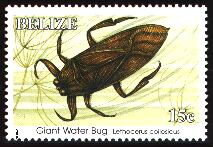 |
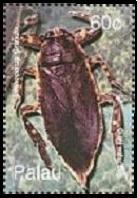 |
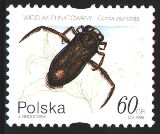 |
|---|---|---|
| Giant Water Bug Lethocerus collosicus (Belostomatidae) |
Giant Water Bug Lethocerus deyrolli (Belostomatidae) |
Lesser Water Boatman Corixa punctata (Notonectidae) |
| Singapore 2011 | Cote d'Ivoire 1978 |
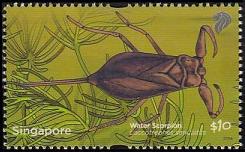 |
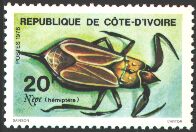 |
|---|---|
| Water Scorpion Laccotrephes simulatus (Nepidae) |
Water Scorpion Nepa nepa (Nepidae) |
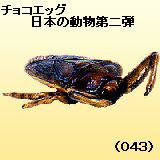 |
|---|
| Giant Water Bug Lethocerus deyrolli (Belostomatidae) (HEMIPTERA) |
Giant Water Bug has the length no less than 50-65mm, and it is overwhelmingly large in aquatic insects. From the flat ground, an imago likes the deep pond applied to Yamachi, and lives. The imago which awoke from hibernation will copulate and lay eggs around May - June, and a male will protect the lump of egges laid to the stalk of the grass on the water surface etc. A forelimb will be large and, occasionally will also catch a frog. An aquatic insect and young fish are caught and the humors are inhaled. Although it was often seen also in a paddy field if cut, it is decreasing remarkably recently.
A Water scorpion is the friend of aquatic life shield-backed bug large subsequently to giant water bug. Although an imago is seen during about one year, it separates from the water between winter. A swamp, and a rice field and a bottom like the shallow swamp and shallow puddle of muddy character. In order to wait intently to be covered with mud on the body and for food, such as small fish and a tadpole, to approach, it is difficult to check a figure, without catching with a net. Breathing is a snorkel system while taking out a respiratory pipe with the almost same length as the length to the water surface.
The imago of Notonectidae mainly appears in spring and autumn, and likes a little deep pond in which the seaweed of the flat ground or mountain grew. If a belly side is turned up, it is stood still on the water surface and there is something usually, there is a habit under which it goes to a quick deep place. In the feature, oar-like hind legs catch a small insect, a tadpole, small fish, etc., and this kind of friend sucks the humors.
 NEXT
NEXT
 to Stamp
to Stamp
 to HomePage
to HomePage